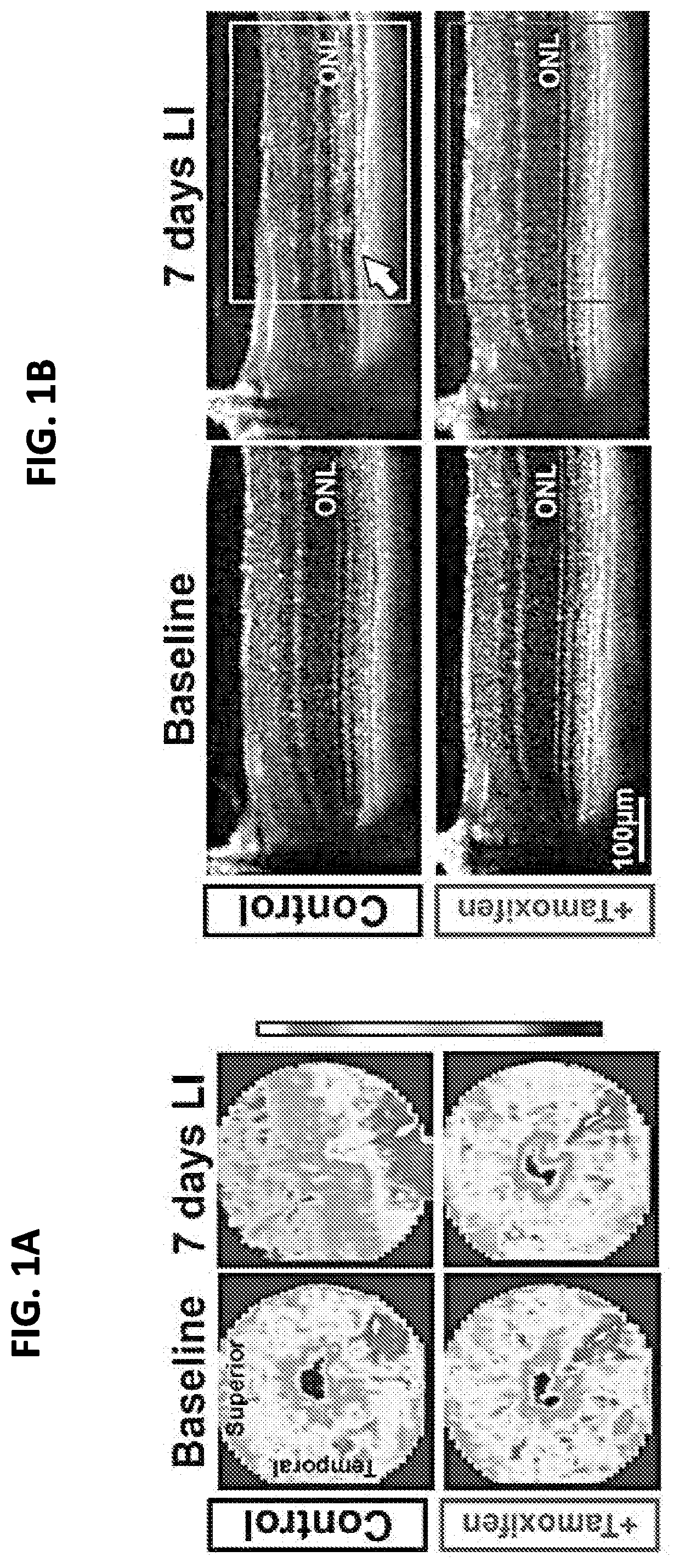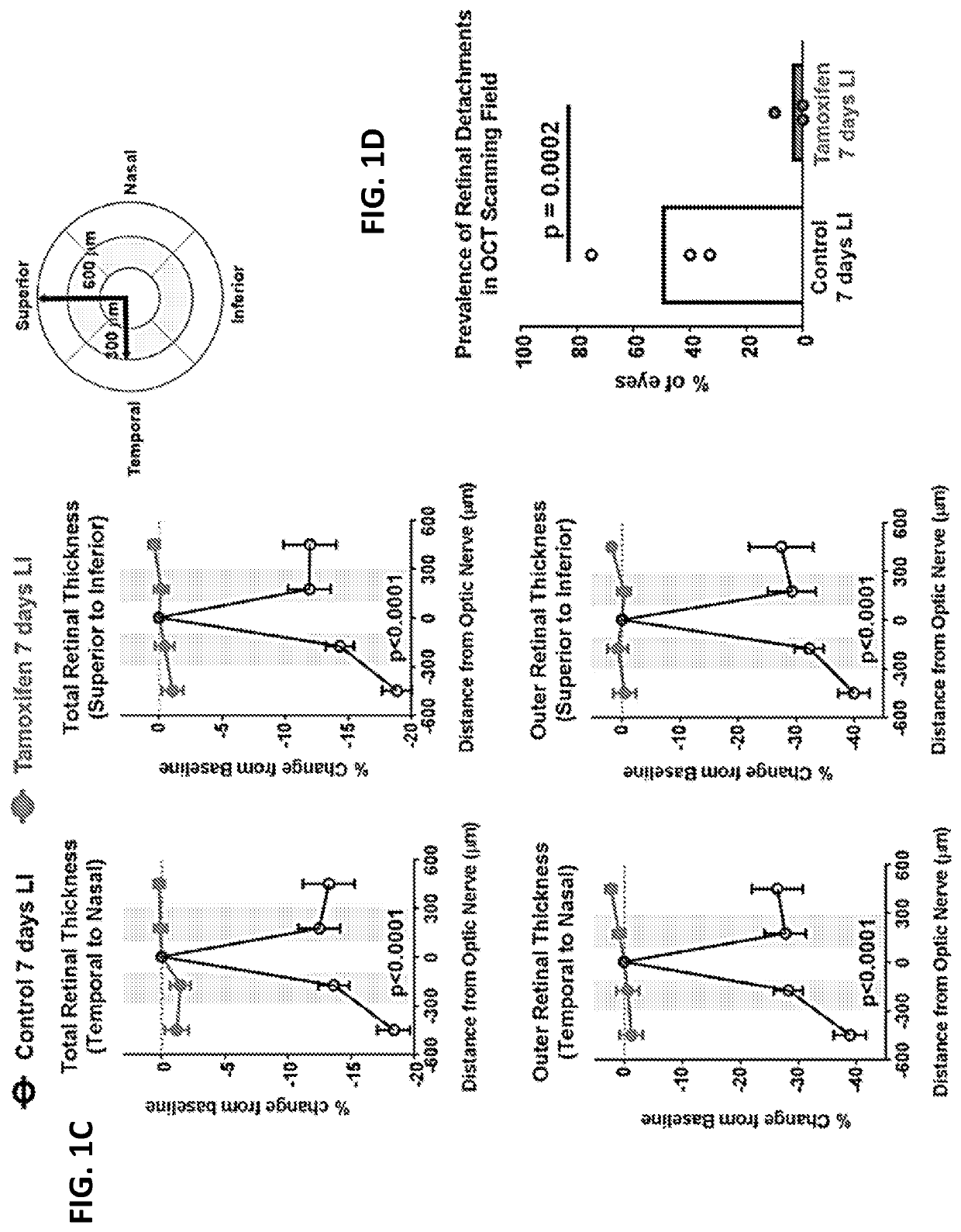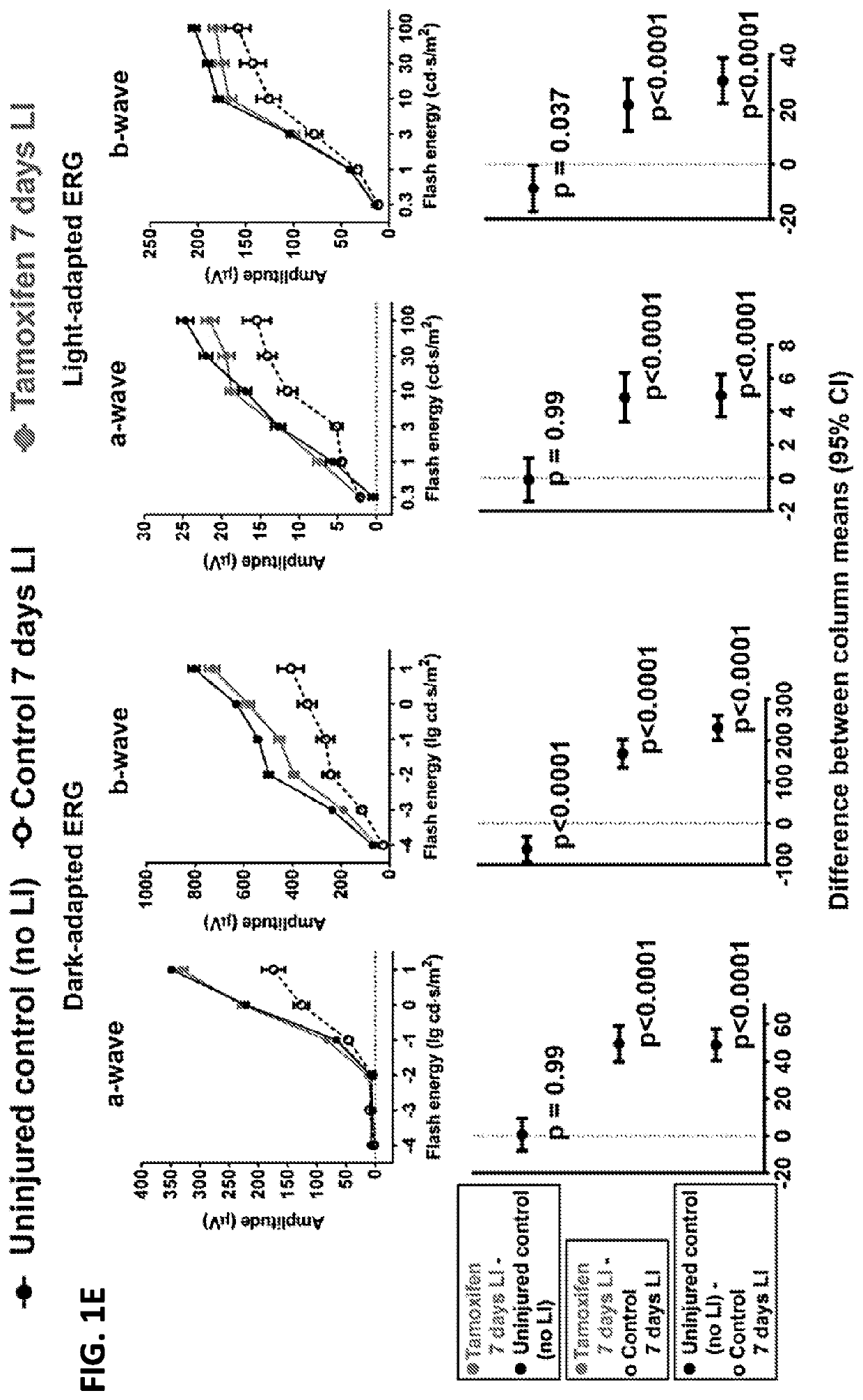Selective estrogen-receptor modulators (SERMs) confer protection against photoreceptor degeneration
a technology of estrogen receptor and selective estrogen receptor, applied in the direction of drug composition, diagnostic recording/measuring, heterocyclic compound active ingredients, etc., can solve the problem of no treatment and achieve significant structural and functional protection, treatment or prevention of retinal degeneration
- Summary
- Abstract
- Description
- Claims
- Application Information
AI Technical Summary
Problems solved by technology
Method used
Image
Examples
example 1
Materials and Methods
[0122]Experimental Animals:
[0123]Young adult wild type (WT) C57BL / 6J mice and mice homozygous for the Pde6brd10 (rd10) mutation were obtained from The Jackson Laboratory (Bar Harbor, Me.). Postnatal rd10 mice (21-50 days of age) and young adult WT mice (2-3 months of age) of both sexes were raised in cyclic light (˜100 lux, 12:12 h) in a National Institutes of Health animal facility. All experiments were conducted according to protocols approved by a local Institutional Animal Care and Use Committee and adhered to the Association for Research in Vision and Ophthalmology (ARVO) Statement animal use in ophthalmic and vision research. For the tamoxifen-treated groups, mice were provided with tamoxifen-supplemented mouse chow (500 mg / kg, Envigo, Indianapolis, Ind.) in place of standard chow for the duration of experiment.
[0124]Mouse Model of Retinal Light Injury:
[0125]Experimental animals were dark-adapted in a dark room for 7 days and then subjected to pupillary di...
example 2
Model of Light-Induced Injury Results in Photoreceptor Apoptosis and Loss of Photoreceptor Function
[0142]Wild type adult (2-3 month old) C57B16 / J mice were subjected to light injury (LI) and the effects of LI analyzed using in vivo OCT imaging and histology. OCT imaging in the central retina revealed widespread overall retinal thinning 7 days post-LI that was most prominent in the superotemporal quadrant of the retina (FIG. 5A). OCT B-scans obtained in the superotemporal quadrant demonstrated a progressive thinning of the outer nuclear layer (ONL) over the first 7 days post-LI that subsequently stabilized (FIG. 5B). Histological analysis in retinal sections obtained in equivalent retinal positions showed the prominent emergence of TUNEL-positive photoreceptors at 1 day and 3 days post-LI which decreased after 7 days (FIG. 5C, D). Quantification of ONL thicknesses in histological analyses of retinal sections corroborated the temporal pattern of retinal thinning observed on in vivo OC...
example 3
Tamoxifen Administration Provides Complete Structural and Functional Photoreceptor Rescue in the Model of Light Injury
[0143]Experimental animals were administered tamoxifen as a supplement in standard mouse chow (estimated 80 mg / kg intake of tamoxifen per day) beginning 1 week prior to LI, and continued following LI. Age-matched control animals were provided with standard chow (without added tamoxifen) and housed in separate cages alongside tamoxifen-treated animals in similar lighting environments. At 7 days post-LI, the typical thinning of the retina centered in the superotemporal quadrant that was observed in control animals on OCT imaging was absent in all tamoxifen-treated animals (FIG. 1A). Similarly, the thinning of the ONL layer and the presence of shallow retinal detachments observed on individual OCT B-scans in control animals were also generally absent in tamoxifen-treated animals (FIG. 1B). Quantification of total retinal thicknesses and outer retinal thicknesses from OC...
PUM
| Property | Measurement | Unit |
|---|---|---|
| thickness | aaaaa | aaaaa |
| cell density | aaaaa | aaaaa |
| cell density | aaaaa | aaaaa |
Abstract
Description
Claims
Application Information
 Login to View More
Login to View More - R&D
- Intellectual Property
- Life Sciences
- Materials
- Tech Scout
- Unparalleled Data Quality
- Higher Quality Content
- 60% Fewer Hallucinations
Browse by: Latest US Patents, China's latest patents, Technical Efficacy Thesaurus, Application Domain, Technology Topic, Popular Technical Reports.
© 2025 PatSnap. All rights reserved.Legal|Privacy policy|Modern Slavery Act Transparency Statement|Sitemap|About US| Contact US: help@patsnap.com



